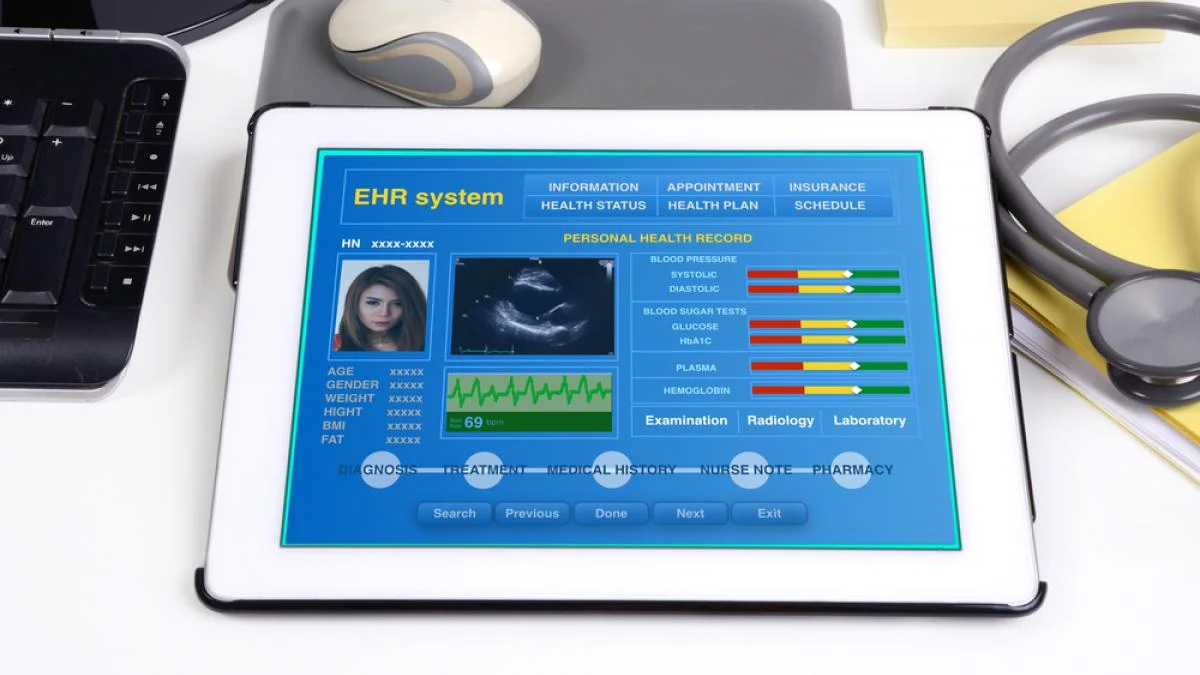Electronic Health Records (EHR) emerge as a groundbreaking digital innovation in the ever-evolving healthcare landscape, revolutionizing how patient information is documented, managed, and shared. This article explores Electronic Health Records, unveiling their significance, underlying technologies, diverse applications, and the transformative impact they hold on healthcare delivery and patient outcomes.
The Significance of Electronic Health Records
Electronic Health Records stand as a cornerstone in the digital transformation of healthcare, offering a comprehensive and centralized platform for storing and accessing patient information. Their significance lies in streamlining workflows, enhancing patient care, and fostering collaborative decision-making among healthcare providers. By digitizing medical records, EHRs contribute to improved accuracy, efficiency, and continuity of care, ultimately elevating the overall quality of healthcare services.
Streamlining Workflows for Healthcare Providers
One of the key significances of EHRs is their role in streamlining workflows for healthcare providers. By transitioning from traditional paper-based records to digital formats, EHRs reduce administrative burdens, minimize manual tasks associated with record-keeping, and enable healthcare professionals to devote more time to direct patient care. This optimization of workflows enhances overall efficiency within healthcare settings.
Improving Accuracy and Accessibility of Patient Information
EHRs play a pivotal role in improving the accuracy and accessibility of patient information. Healthcare providers can access comprehensive patient histories, medications, and treatment plans through standardized digital records. It reduces the likelihood of errors and ensures that critical information is readily available, promoting informed decision-making and enhancing patient safety.
Underlying Technologies of Electronic Health Records
The realization of Electronic Health Records is made possible by integrating advanced technologies that ensure secure, interoperable, and efficient digital healthcare systems.
Health Information Exchange (HIE) for Interoperability
Interoperability is a key aspect of EHR systems facilitated by technologies like Health Information Exchange (HIE). It allows seamless sharing of patient information among different healthcare entities, ensuring that relevant data is accessible across various healthcare settings. Interoperability enhances care coordination and contributes to a more holistic approach to patient treatment.
Secure Data Storage and Encryption
Ensuring the security of patient information is paramount in EHR systems. Secure data storage and encryption technologies safeguard sensitive medical records from unauthorized access or breaches. These measures comply with stringent privacy regulations, instilling confidence in healthcare providers and patients regarding the confidentiality and integrity of their health information.
Integration with Health Information Technologies
EHRs integrate with various health information technologies to enhance functionalities. It includes integrating diagnostic tools, imaging systems, and laboratory information systems. The seamless data flow between these technologies and EHRs ensures that healthcare providers have a comprehensive view of a patient’s health status, enabling more accurate diagnoses and tailored treatment plans.
Diverse Applications of Electronic Health Records
Beyond simplifying administrative tasks, EHRs find applications across diverse healthcare domains, contributing to better care coordination, research, and public health initiatives.
Enhanced Care Coordination and Communication
EHRs facilitate enhanced care coordination by providing a centralized platform for healthcare professionals to collaborate and share information. Care teams can access real-time updates on a patient’s condition, treatment history, and ongoing care plans, fostering communication and ensuring that everyone involved in a patient’s care is well-informed.
Support for Clinical Decision-Making and Research
The wealth of data stored in EHRs is valuable for clinical decision-making and research. Healthcare providers can leverage aggregated anonymized data to identify trends, evaluate treatment outcomes, and contribute to evidence-based practices. This data-driven approach improves individual patient care and advances medical knowledge on a broader scale.
Public Health Initiatives and Epidemiological Studies
EHRs support public health initiatives and epidemiological studies. Aggregated and de-identified data from EHRs can be utilized to monitor and respond to disease outbreaks, track population health trends, and formulate targeted interventions. This population-level perspective contributes to proactive public health strategies and disease prevention efforts.
Challenges and Future Developments in Electronic Health Records
Despite the transformative impact of EHRs, challenges persist, ranging from interoperability issues to data security and user experience concerns. Addressing these challenges and exploring future developments are crucial for unlocking the full potential of EHR systems.
Improving Interoperability Across Healthcare Systems
Interoperability remains a significant challenge in EHRs. Enhancing compatibility and seamless data exchange among healthcare systems and providers is essential for achieving a truly interconnected and collaborative healthcare environment. Future developments may focus on establishing standardized protocols and frameworks to overcome interoperability barriers.
Strengthening Data Security and Privacy Measures
As the digitization of health records continues, reinforcing data security and privacy measures is imperative. Stricter encryption protocols, robust authentication methods, and proactive cybersecurity strategies are essential to safeguard EHRs from potential threats. Ongoing developments in blockchain technology may also offer innovative solutions to enhance the security and integrity of EHR data.
User-Centric Design for Improved User Experience
User experience is crucial in effectively adopting EHR systems. Future developments may prioritize user-centric design principles, aiming to create intuitive, user-friendly, and efficient interfaces. Improving the overall user experience will encourage widespread acceptance and utilization of EHRs among healthcare professionals.
Conclusion
Electronic Health Records are a transformative force in modern healthcare, reshaping how patient information is managed and utilized. Their significance in streamlining workflows, improving accuracy, and fostering collaborative care underscores their pivotal role in enhancing the overall quality of healthcare services.
As technology evolves and challenges are addressed, EHRs are poised to become an indispensable tool in delivering patient-centered, data-driven, and interconnected healthcare. In the journey towards a more digitized and integrated healthcare ecosystem, Electronic Health Records stand as a testament to the potential of digital innovation in advancing the well-being of individuals and communities.










